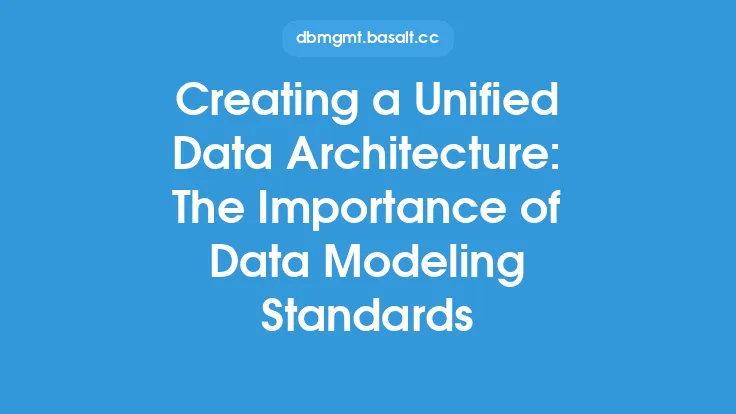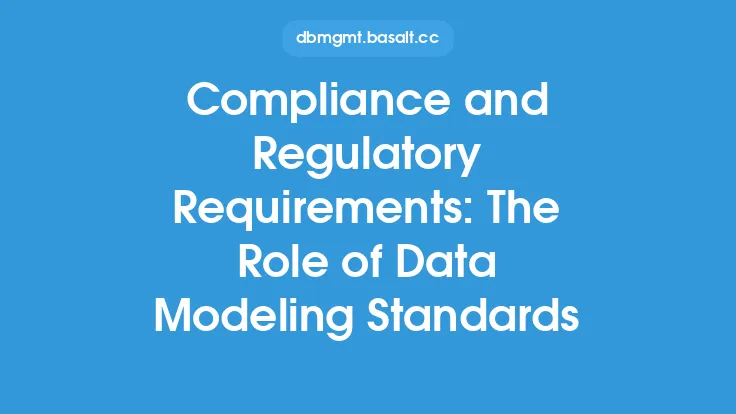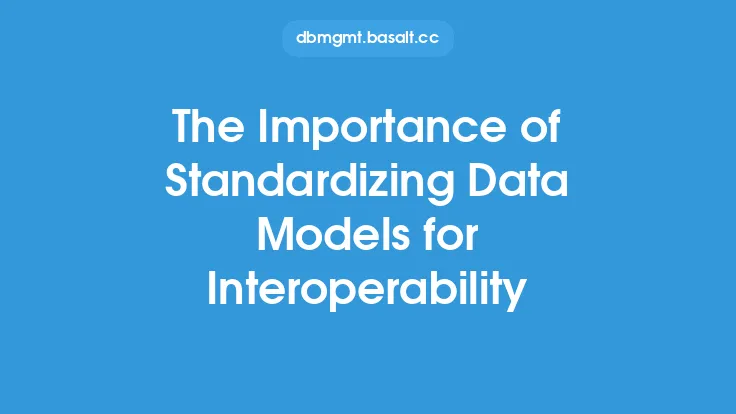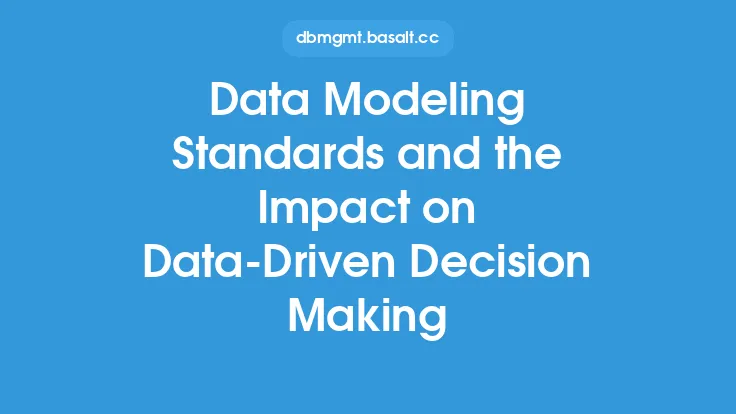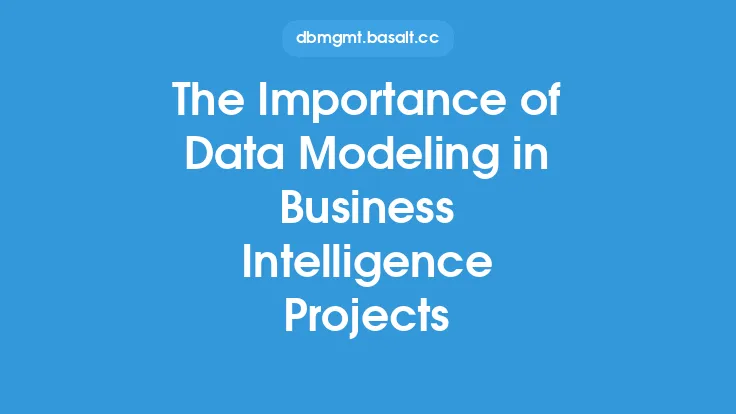Adopting industry-recognized data modeling standards is a crucial step in ensuring the quality, consistency, and reliability of an organization's data assets. Data modeling standards provide a common framework for designing, developing, and maintaining data models, which are essential for effective data management and analysis. By adopting industry-recognized standards, organizations can reap numerous benefits that can have a significant impact on their overall data management capabilities.
Introduction to Data Modeling Standards
Data modeling standards are a set of guidelines, rules, and best practices that govern the design and development of data models. These standards ensure that data models are consistent, accurate, and scalable, and that they meet the needs of various stakeholders, including business users, data analysts, and IT professionals. Industry-recognized data modeling standards, such as the Object Management Group's (OMG) Common Data Model (CDM) and the International Organization for Standardization's (ISO) SQL standard, provide a common language and framework for data modeling, enabling organizations to communicate and share data more effectively.
Benefits of Adopting Industry-Recognized Data Modeling Standards
The benefits of adopting industry-recognized data modeling standards are numerous and can have a significant impact on an organization's data management capabilities. Some of the key benefits include:
- Improved data quality and consistency: By adopting industry-recognized standards, organizations can ensure that their data models are consistent and accurate, which is essential for making informed business decisions.
- Enhanced data sharing and collaboration: Standardized data models enable organizations to share and collaborate on data more effectively, both internally and externally.
- Increased data scalability and flexibility: Industry-recognized standards provide a framework for designing scalable and flexible data models that can adapt to changing business needs.
- Better data governance and security: By adopting standardized data models, organizations can ensure that their data is properly governed and secured, which is essential for maintaining regulatory compliance and preventing data breaches.
- Improved data-driven decision making: Standardized data models provide a common framework for data analysis and reporting, enabling organizations to make more informed business decisions.
Technical Benefits of Adopting Industry-Recognized Data Modeling Standards
From a technical perspective, adopting industry-recognized data modeling standards can have numerous benefits, including:
- Improved data model portability: Standardized data models can be easily ported to different platforms and systems, reducing the risk of data loss or corruption during migration.
- Enhanced data model reusability: Industry-recognized standards enable organizations to reuse data models across different projects and applications, reducing development time and costs.
- Better data model maintainability: Standardized data models are easier to maintain and update, reducing the risk of data inconsistencies and errors.
- Improved data model integration: Industry-recognized standards provide a framework for integrating data models from different sources, enabling organizations to create a unified view of their data assets.
Implementing Industry-Recognized Data Modeling Standards
Implementing industry-recognized data modeling standards requires a structured approach that involves several key steps, including:
- Defining the scope and objectives of the data modeling project
- Selecting the relevant industry-recognized standard
- Developing a data modeling framework and methodology
- Training and educating data modeling staff
- Establishing a data governance and quality control process
- Continuously monitoring and evaluating the effectiveness of the data modeling standards
Best Practices for Adopting Industry-Recognized Data Modeling Standards
To ensure the successful adoption of industry-recognized data modeling standards, organizations should follow several best practices, including:
- Establishing a clear data modeling strategy and roadmap
- Engaging with business stakeholders to ensure that data models meet their needs
- Using standardized data modeling tools and techniques
- Continuously monitoring and evaluating the effectiveness of the data modeling standards
- Providing ongoing training and education to data modeling staff
- Encouraging collaboration and knowledge sharing across the organization
Conclusion
In conclusion, adopting industry-recognized data modeling standards is essential for ensuring the quality, consistency, and reliability of an organization's data assets. By adopting standardized data models, organizations can reap numerous benefits, including improved data quality and consistency, enhanced data sharing and collaboration, and better data governance and security. To ensure the successful adoption of industry-recognized data modeling standards, organizations should follow a structured approach and best practices, including defining the scope and objectives of the data modeling project, selecting the relevant industry-recognized standard, and establishing a data governance and quality control process.
